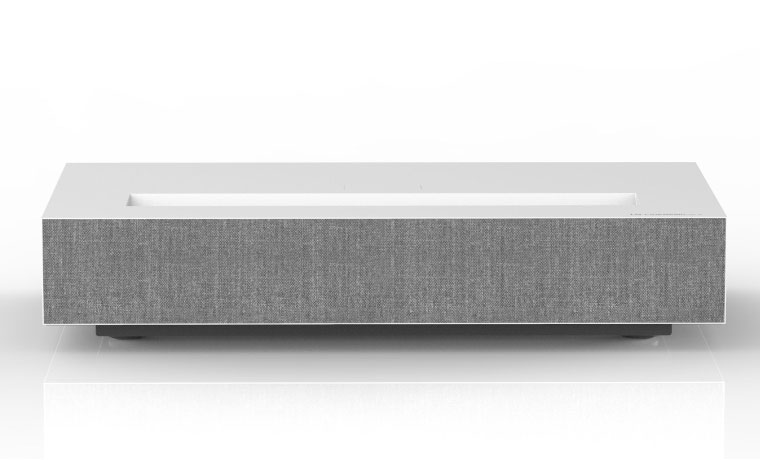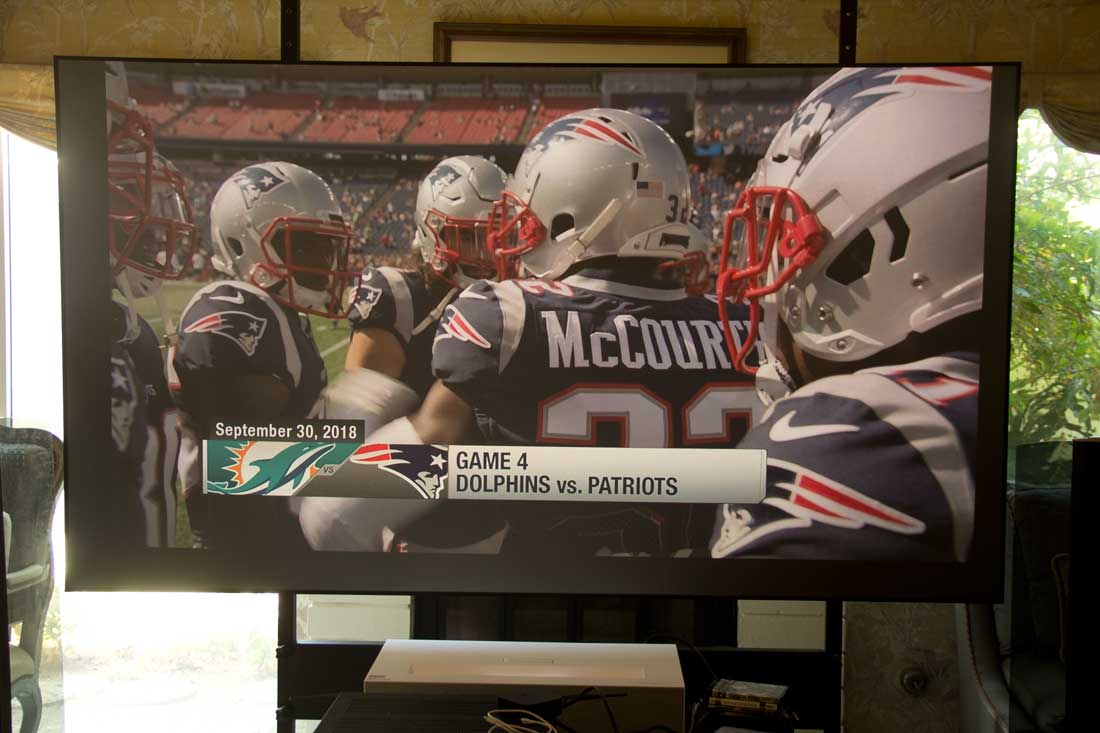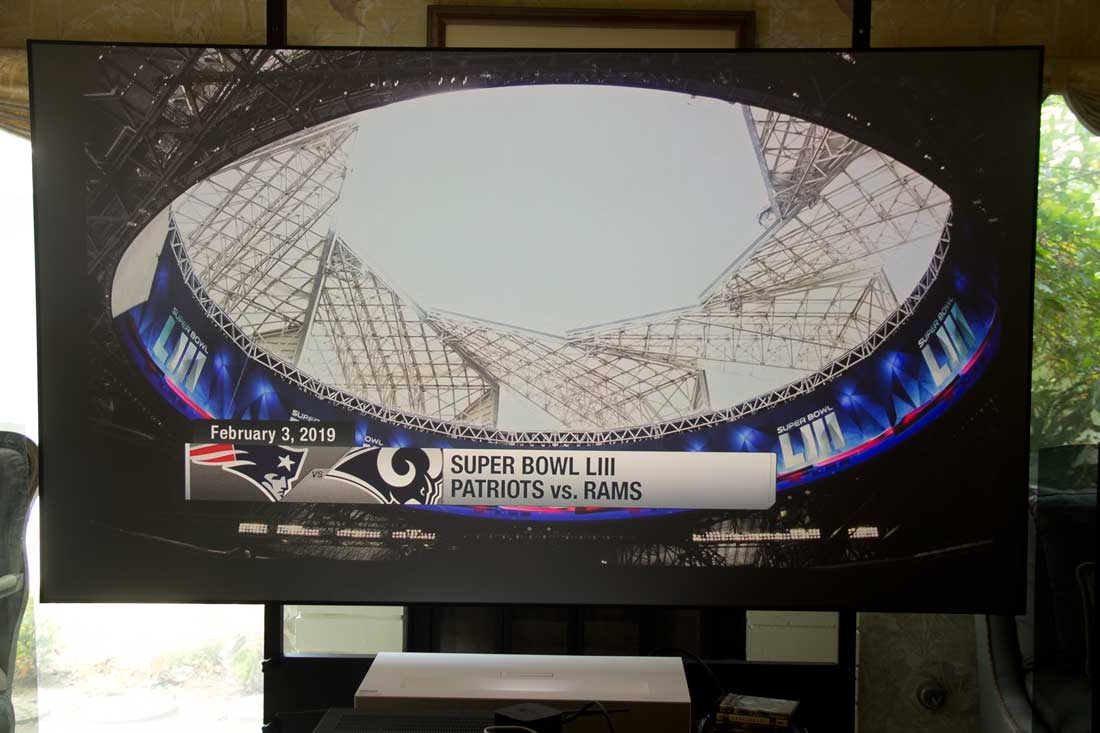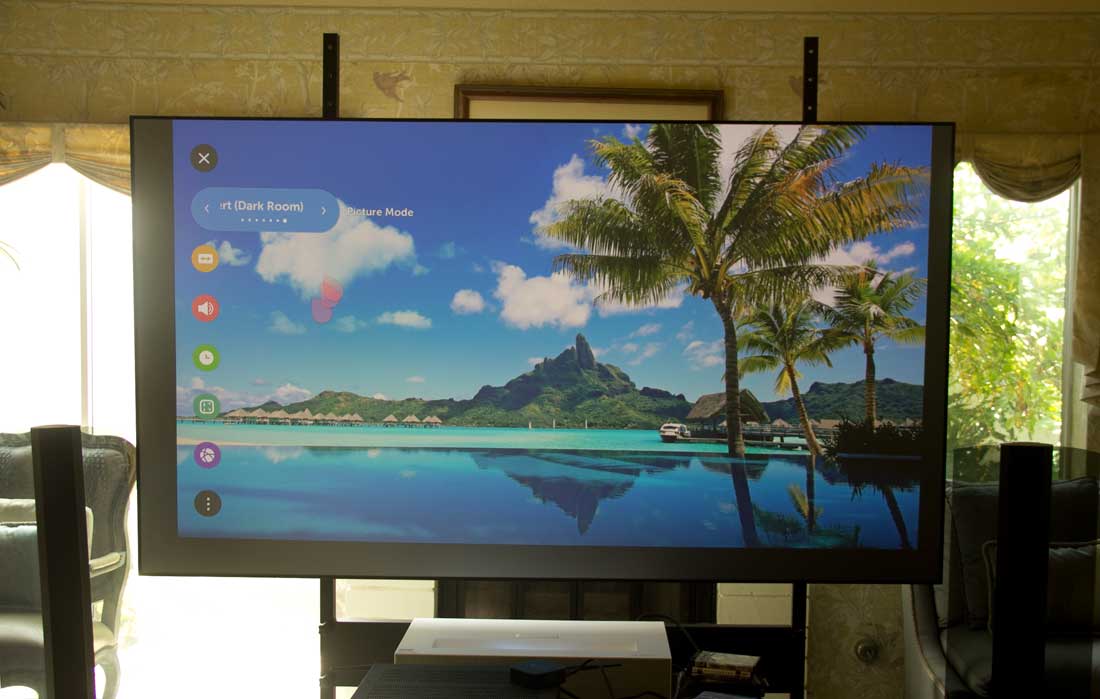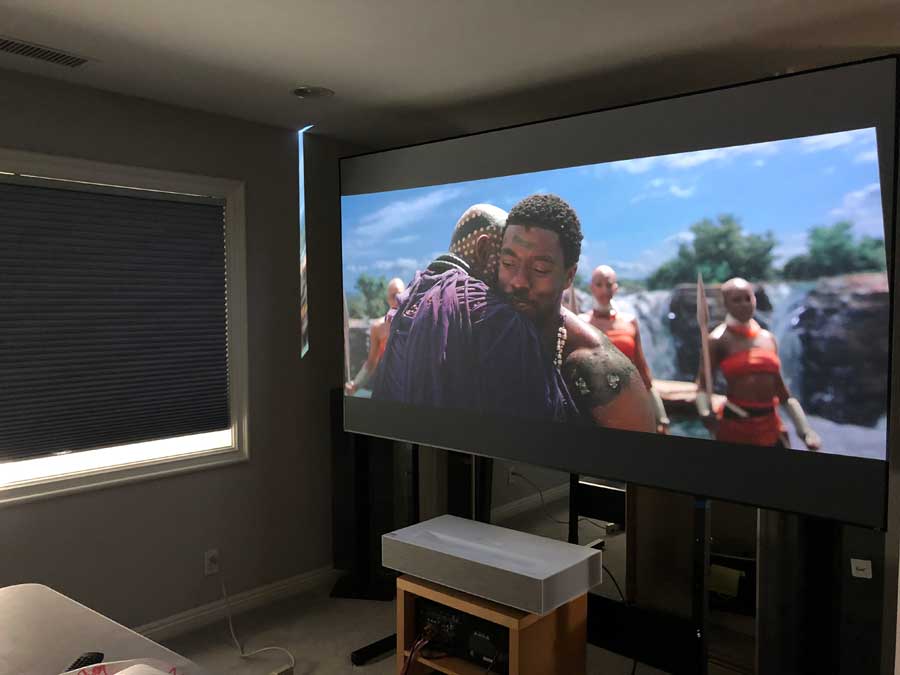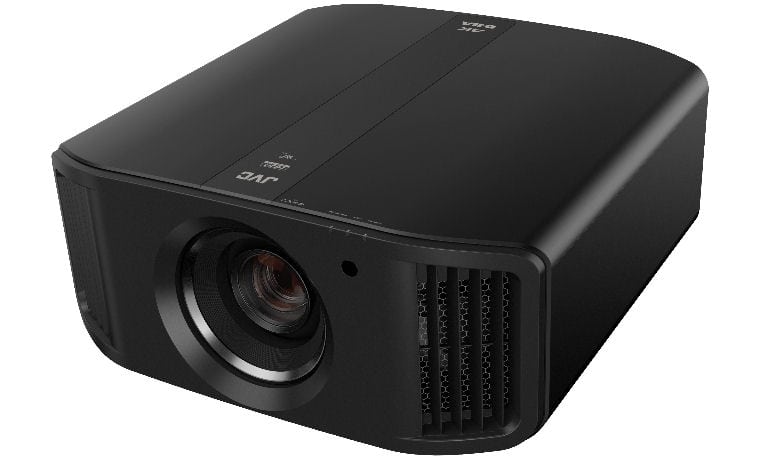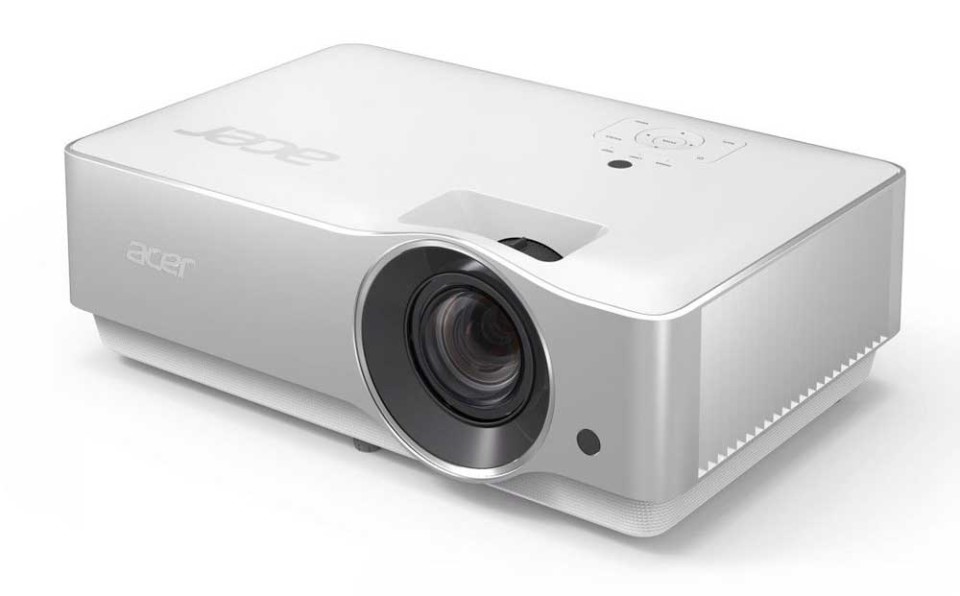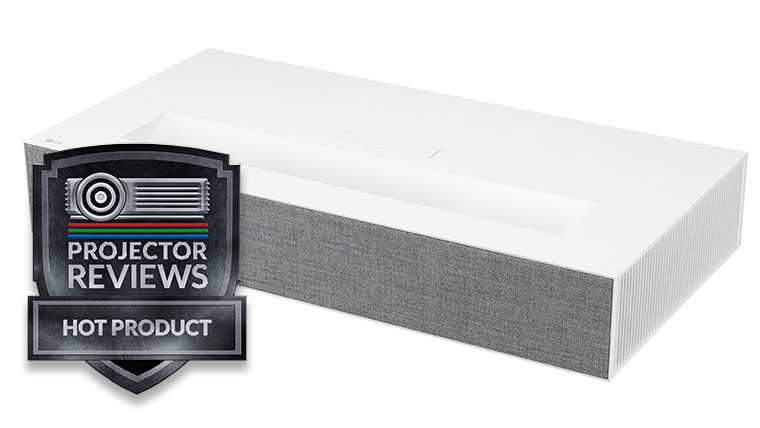The audience facing front of the LG houses two 5 watt speakers, to provide decent sound, many will want to have a full audio system to complement the movie theater visual experience. To complement, or replace the internal sound, you can output to Bluetooth or aa Digital Audio Out (Toslink), while the internal speakers are on, or off. (Nice!) That means you could just add a powered subwoofer to have respectable bass, or feed the audio to an AV receiver. Rock on!
This HU85LA is basically the smartest projector around. Most of the competition has no smarts at all, or very little. This LG projector provides the almost identical capabilities to their premium OLED TVs. They have a well regarded App store, some of the major apps like Netflix, Amazon Prime, Hulu, Pandora, etc. are preloaded.
Add to that the addition of Google Assistant which you can operate through the remote control, using voice, for general Assistant operation or controlling the projector.
The LG relies on a dual laser light source, which uses one blue, and one red laser. It uses beam splitting instead of a color wheel to create green with phosphors.
The projector has many picture modes, which we describe in more detail within this review. The three brightest modes go from a little punchy to a very “over the top”, heavily saturated, picture designed to cut through too much ambient light. Calibrating the projector produces far more accurate color, although the projector without adjustment looks very good, if cool in the colors. That is enjoyable to watch. The best modes look great with pretty low room light levels. Basically you have a good selection of modes for different lighting conditions.
Black level performance could be better, but I expect in a living room family room type environment, there will be at least minimal lighting, so as to minimize the advantages of projectors with better blacks.
Gamers – The HU85LA should work for you. It’s mid-fifty millisecond input lag is “acceptable” to many “serious” gamers. We call lag in the 30’s good, and any projector down around 15ms is a serious gamer.
Get the Right Screen
If you are placing your LG projector in a room where you will have some light on almost all of the time, you really should buy a screen to optimize your experience.

